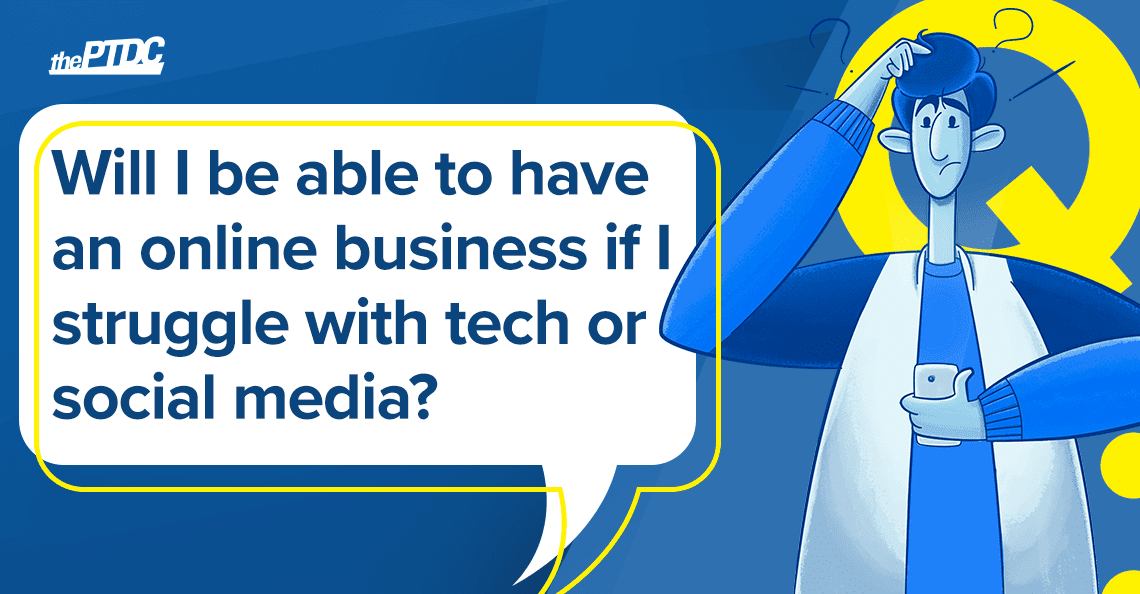 Here’s the thing; I'm going to be real with you. If you’ve ever bought anything online or if you use email, you are tech savvy enough to start an online training business.
Here’s the thing; I'm going to be real with you. If you’ve ever bought anything online or if you use email, you are tech savvy enough to start an online training business.
You don't need to invest in the latest training software. You don't need to figure out how to navigate all the social media platforms. (Though, this guide on how to promote personal training on Instagram makes it simple.)
All this is a big misnomer. It comes from companies trying to sell you things by convincing you that you need them and that you’ll be at a competitive disadvantage without them.
But in the online training world that’s simply not true.
Will you be able to have an online business if you struggle with tech or social media?
I say yes. Because the only things you need to launch this kind of business are:
- A way to deliver your program to clients
- A way to answer their questions and otherwise support them
- A method for collecting payment
You can do all that at a basic level with a phone, email, or text messaging, and a PayPal or Venmo account.
The reality is you don't need to learn anything that you don’t probably already know or pay anybody a cent. If you’ve ever used Microsoft Excel, Google Drive, Google Sheets, email, Facebook, or PayPal, you are tech savvy enough to become an online coach.
I know some of you may be skeptical, but one of the reasons why this is possible is because when you’re starting out your initial clients are always going to come from your existing network of family and friends.
How to start an online business if you struggle with tech or social media
Seth Godin, who's a marketing and business leader I admire, wrote a book called Permission Marketing. It was published in 1999 before the internet and social media really got rolling.
But the concept turned out to be perfectly suited to this new way of interacting and doing business. In fact, Business Week called Godin “the ultimate entrepreneur for the Information Age.”
The idea behind “permission marketing” is that instead of reaching out to people and trying to sell them something they may not immediately want or don’t have time to talk about, you reach out before you're selling anything.
You introduce an idea and ask for their feedback.
Think about this approach. If someone in your social network, someone you know even just a little, reaches out to you and says, “Hey, I’m thinking of doing X, would you mind chatting with me about it? I’d really value your input on how to refine it.”
A request like this would be hard to refuse.
In fact, most people would be flattered to be asked for their insight and opinion. They’d be happy to grant you permission to send them some info or answer a few questions.
And during that initial, informal exchange of information, whether it’s on the phone, via email, or though social media, you would explain:
- that you’re passionate about health and fitness,
- that it has positively impacted your life (or the life of a loved one),
- and that you’re considering starting an online training business so you can help other people experience these same benefits.
Then you’d ask for their opinion:
Do you think this is a good idea for me?
Do you have any advice on starting a business like this—anything I should or should not do?
Do you have any thoughts on who my target market should be?
Listen to what they say. Then thank them for their feedback. Repeat that it’s helpful and that you really value it.
If you’re doing this via email or Messenger, don’t rush things. Let it play out over days or even weeks. Then, when you’ve made them part of the process, when they feel they have some ownership, ask this:
Do you know anybody who might be interested in this?
As you can see, this approach to selling and marketing is nontraditional and nonconfrontational.
You’re still not selling them anything. When you ask this final question, most people will try to think of someone who might be interested and would probably even be willing to make an introduction for you.
That’s because they feel like they’ve helped you develop this idea and naturally want to assist you in growing it.
Or—and this is ideal—they might just say, “You know, I’d actually be pretty interested in doing this.” And then the door is fully open to discussing your services, your program, and how much you charge.
That’s how client acquisition initially works based on the principles of “permission marketing.”
You’re not paying to advertise.
You’re not sending cold content to strangers on social media.
You’re not using any expensive software or tech you’re not already familiar with.
Instead, you’re using your existing social network to simply have conversations with friends, family, and acquaintances.
That’s how it starts.
I’ve seen it work countless times with students at the Academy, and I’ve used it myself.
And with this incredibly simple approach, you can do a really good job.
Learn more: Get answers to more online trainer questions.











